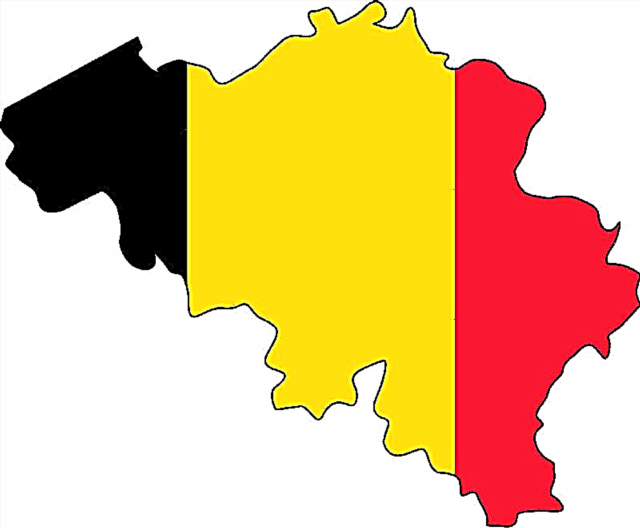The Kunstkamera in St. Petersburg was originally a collection of wonders, primarily in the field of human physiology and anatomy. Gradually, the collection was supplemented with new artifacts related to the cultural and everyday life of different ethnic communities. Thus, the cabinet exposition was transformed into an academic scientific institution - the Peter the Great Museum of Anthropology and Ethnography of the Russian Academy of Sciences.
History

Peter I was interested in innovations in the field of technology and natural science knowledge. Participation in the foreign "Great Embassy" gave him the opportunity to get acquainted with many of the achievements of European scientists and inventors. During the trip, the tsar repeatedly examined the collection of rare artifacts called "kunshtami". He bought the copies he liked and sent them to Russia. These things became the basis for the creation of the "Sovereign Cabinet".
The acquisitions were kept in the Summer Palace. The premises they occupied began to be called the Kunstkamera, which translated from German means "cabinet of rarities." The official documents record the date of foundation of the tsarist freak show - 1714. A separate building was required to accommodate the exhibits. The place for the construction was chosen on the cape of Vasilievsky Island. During the construction period, the rarities were transferred to the Kikins' house.
Construction work continued in 1718 - 1734. They were alternately led by architects:
- Mattarnovi
- Gerbel
- Chiaveri
- Zemtsov
The body is made in baroque style. It unites 2 three-storey buildings with a domed tower. The general public was allowed to view the exposition in 1719. From the moment of its appearance, the Kunstkamera performed an educational function, acquainting visitors with a variety of materials in the field of natural sciences. After the creation of the Russian Academy of Sciences in 1724, it became a part of it. To replenish the exposition, special ethnographic expeditions were organized, which collected rarities in remote regions of Russia and abroad.
After the demarcation of the existing collections, 7 museum institutions were formed:
- Mineralogical
- Botanical
- Zoological
- Anatomical
- Ethnographic
- Egyptian
- Asiatic
- Cabinet of Peter I
In the late 70s. 19th century the ethnological collection was transformed into the Museum of Anthropology and Ethnography. Since 1903 it has been named after Peter the Great (the Great). In the 90s of the 20th century. The Kunstkamera was included in the list of cultural heritage sites of the Russian Federation. She rightfully bears the title of the oldest public museum in the country.
Exposition

The total composition of the museum's funds includes over 1.880 million exhibits. Things presented for public display have historical, cultural and scientific value.
Thematic selection of subjects was carried out in 2 main areas:
- anatomical
- ethnological
Scientific instruments and models represent a separate category. These include the famous giant globe.
Great Gottorop Globe

The unique 2-sphere globe was made in the middle of the 17th century. at the initiative of the Duke of Schleswig-Holstein Frederick III. Its main feature is in modeling the surface of the globe (outside) and the starry sky (inside). An unusual project was proposed and developed by Adam Olearius. The design of the planetarium globe was a huge sphere (3.1 m in diameter) with empty space in the inner part. The surface consisted of metal plates fastened together and pasted over with canvas. Above was a geographic map depicting continents and oceans.
The inner plane resembled the sky, on which the constellations were distinguished. A special mechanism created the illusion of the movement of celestial bodies. Spectators entered the planetary chamber through a hatch. The room was designed for the simultaneous stay of 12 people. For the convenience of visitors, a bench and a table were equipped inside the ball. The total mass of the globe was 3.5 tons.
It was considered the largest in the world. In honor of the Gottorp castle, where the inventor lived, the model received the nickname - Gottorp. The globe was presented as a gift to the Russian Tsar Peter in 1713. In 1716 he arrived in the Russian capital and was placed in the tower of the Kunstkamera.
During a major fire in 1747, the giant ball burned out completely. Only the hatch door has survived from the original model. Reproduction of a similar sample in 1748-1752. were engaged in:
- B. Scott and F. N. Tiryutin - mechanics
- I.F.Truskot - cartographer
- I. E. Grimmel - painter
The new planetarium globe was installed in a separate building, and at the beginning of the 20th century. moved to the Admiralty. In the early 40s, the model came to Germany and was returned to the Soviet Union in 1948. At present, the Great Academic (Gottorp) globe is on display at 4-5 floors of the Kunstkamera museum building. To view it, you need to purchase a separate ticket.
Sections
The structure of a modern museum consists of 8 sections, 6 of them are devoted to the culture and life of the population of different parts of the world. The basis of the collection is represented by authentic items brought from distant expeditions by Russian travelers I.F. Kruzenshtern, Yu.F. Lisyansky, F.F. Bellingshausen, M.P. Lazarev, N.N. Miklouho-Maclay. The things collected in the Kunstkamera clearly demonstrate the peculiarities of the way of life of ethnic groups, their religious beliefs, and traditional culture.
Indigenous people of North America

The North American continent is represented by the original inhabitants - Indian tribes and peoples of the North (Aleuts, Eskimos). The funds of the section contain exhibits from the expeditions of I. Voznesensky. Among the most valuable rarities:
- indian peace pipes
- shaman's equipment
- Eskimo fishing gear
- clothes made of fish skin, deer skins, entrails of sea animals
Japan

Since ancient times, the Japanese islands have been inhabited by two ethnic communities that differ in their civilizational way of life:
- ainu
- Japanese
The Kunstkamera has an extensive collection of traditional fishing equipment (hooks, nets, traps), which were used by local residents. The rich culture of the Land of the Rising Sun is represented by ancient products made with great skill. Miniature carvings - netsuke, in the past played the role of keychains.
With their help, the necessary items were fixed on the belt, since the presence of pockets in a kimono is not provided. Part of the Japanese section is devoted to the military class - the samurai. Equipment and weapons of medieval warriors amaze with their skillful decoration and beauty.
Africa

The first exhibits for the African section were collected during the travels of W.V. Juncker in 1875-1878. Among the rare artifacts:
- baria ancestor figurines
- costumes of members of secret alliances
- head masks
- casting from Benin
- Akka tribe weapon
The African collection (over 11 thousand items) reflects different aspects of the life of the peoples of the Black Continent.
Near and Middle East
Islamic culture is widely represented in halls dedicated to the countries of the Middle East region. The leading role in the exposition is played by the holy book of Muslims - the Koran. The museum contains her handwritten and printed samples. In addition, visitors can see writing materials, fabrics, weapons, utensils.
China

The ancient culture of the Celestial Empire is reflected in the Chinese section. It contains items made of lacquer, porcelain, enamel, wood, bone, stone. Samples of ethnic clothing are displayed in the halls. The civilizational significance of the region is emphasized by the inventions made by the ancient Chinese - a compass, a seismograph, a solar-powered boiler and others.
Mongolia
The central place in the Mongolian hall is occupied by the traditional dwelling of nomads - the yurt. Its internal space has a clear organization, it is divided into male and female parts. The everyday attributes of nomadic life include horse harness, saddles, blankets, richly decorated with ornaments. The shaman flute made of human bone is of great interest to visitors.
India. Indonesia

Picturesque exhibits tell about the life of the peoples of South Asia. The funds of the museum contain wooden figurines, ritual masks, national costumes. A separate category is made up of pieces of theatrical art - puppets and flat puppets of the shadow theater. Connoisseurs of weapons will be interested in the original kris daggers from Indonesia. The most unusual exhibit in the section is a huge statue of a guardian demon (rakshasa).
Indochina
You can get acquainted with the traditional culture and art of the countries of Southeast Asia in a special section. The stands display samples of Buddhist sculpture, theatrical masks, musical instruments, as well as household items (dishes, utensils), national clothes, weapons.
Korea
A separate section is devoted to the inhabitants of the Korean Peninsula. It contains ancient artifacts and objects that represent the original culture of Koreans. A selection of porcelain and ceramic items made using the technique of transparent glaze (celadon) deserves special attention.
The first natural science collections of the Kunstkamera

Peter the Great conceived the Kunstkamera as a collection of rare materials related to the natural branches of scientific knowledge. During his European voyage, he acquired two major collections:
- Frederic Ruysch
- Albert Seba
In addition, a royal decree was issued ordering the delivery of rare artifacts found on the territory of Russia to the capital. The biological collection has been preserved and displayed to visitors. Particularly impressive are the alcohol-based preparations showing anomalies in the development of the human body.
Academy of Sciences of the 18th century and M.V. Lomonosov
The Russian Academy of Sciences was originally adjacent to the Kunstkamera. The Academy gained fame and fame thanks to the activities of the outstanding scientist-encyclopedist Mikhail Lomonosov. His personal belongings, books, devices have become part of the museum collection. The exposition dedicated to the activities of the Academy of Sciences of the 18-19th centuries recreates the scientist's office. It presents works made from pieces of smalt, the release of which was organized by Lomonosov.
The academic section also contains information on the activities of other prominent Russian scientists:
- D. Bernoulli
- J. Delisle
- G. Miller
- L. Euler
The first astronomical observatory of the Academy of Sciences

In 1725, at the invitation of the Russian Academy of Sciences, the famous French astronomer J. Delisle came to St. Petersburg. At his request, the 3rd, 4th and 5th floors of the Kunstkamera tower are being converted into an observatory. It began to function fully in 1735. In 1747, a massive fire broke out in the tower and all equipment burned down.
The museum collection dedicated to the St. Petersburg Observatory includes ancient scientific instruments and instruments:
- spotting scopes with different focus
- astronomical clock
- optical quadrant
Opening hours and ticket prices
The museum is open for visiting from Tuesday to Sunday. Closed on Mondays. Cleaning day on the last Tuesday of every month. The exposition is closed on holidays (31.12.1.01.1.05). Working hours are 11-19 hours.
Ticket price:
- 300 rubles for adults
- 100 rubles for schoolchildren, students, pensioners
Every month (April-September) on the 3rd Thursday, the museum exposition can be viewed free of charge. Discount tickets are issued at the box office.
Where is it located and how to get there
The building of the Kunstkamera is located in St. Petersburg at the address - Universitetskaya embankment, 3. The entrance for visitors is open from the side of the Customs lane
The museum can be reached by ground and underground transport:
- by buses - No 7, 10.24, 47.191
- trolleybuses - No. 1, 7, 10, 11
- metro - Frunzensko-Primorskaya (stations "Admiralteyskaya" and "Sportivnaya") and Nevsko-Vasileostrovskaya lines (stations "Vasileostrovskaya" and "Gostiny Dvor").











